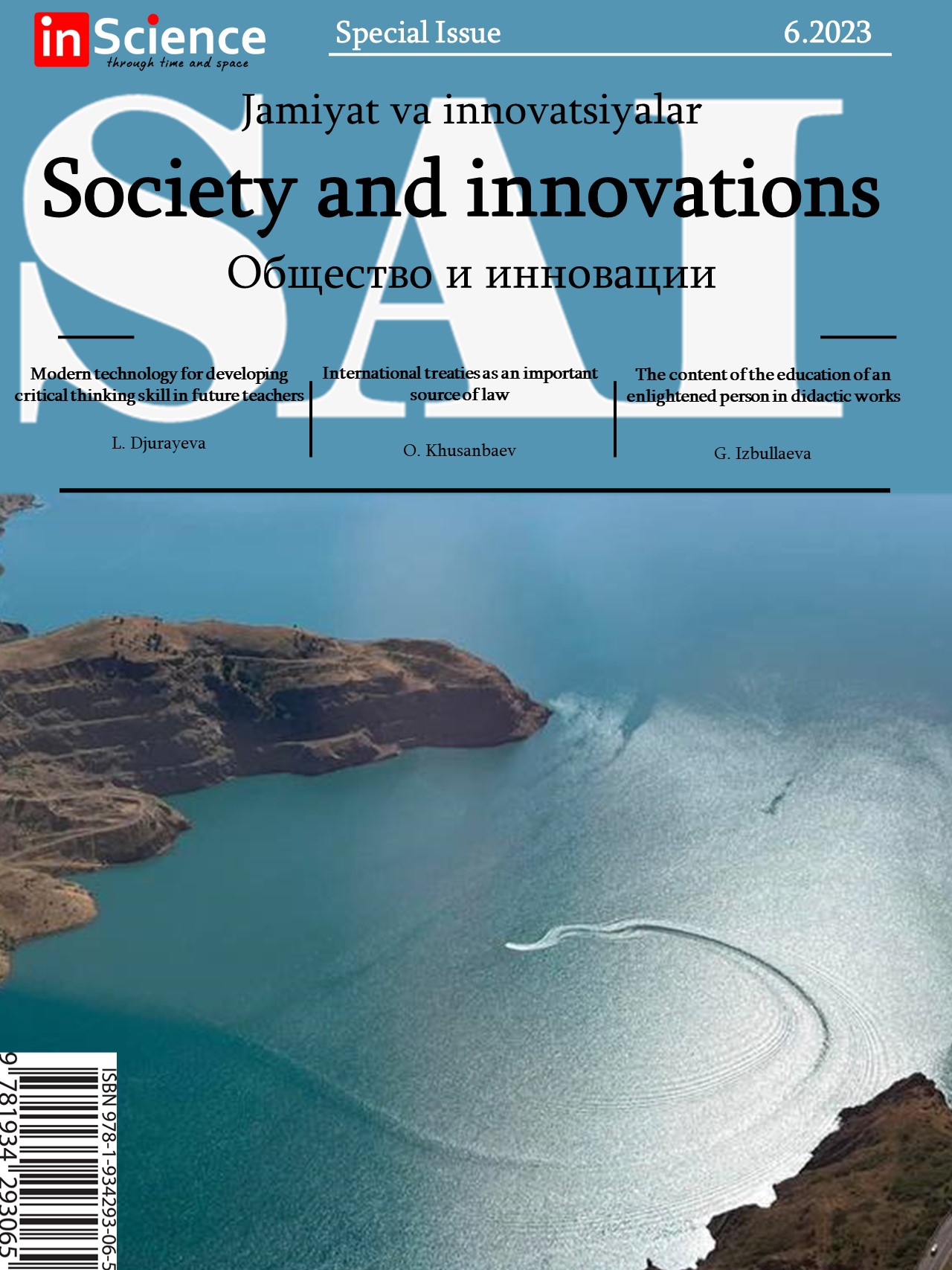DOI
https://doi.org/10.47689/2181-1415-vol4-iss5/S-pp20-23Keywords
proverbs / sayings / methods / writing and speaking skills / schools / ethical principles / education / motivation / idioms / culture / tradition / folk proverbsAbstract
This article touches upon the topic of teaching English proverbs and sayings in secondary schools. According to the author, in recent years there has been an acute issue of introducing modern methods of teaching foreign languages in secondary schools, their effective use to improve the quality of teaching foreign languages to students, as well as the formation and development of their communicative culture. In fact, teachers sometimes set learning tasks based on the disclosure of specific educational material, and not on the basis of the capabilities and prospects for the development of students. The use of proverbs and sayings as a means of organizing learning is one of the best ways to make the lesson bright, rich, extraordinary, and most importantly exciting for students, which undoubtedly contributes to memorization.
Downloads
References
Ganieva D. A. SYNCRETISM AND POLYFUNCTIONALITY OF AUXILIARY VERBS IN INFLECTIONAL AND AGGLUTINATIVE LANGUAGES //INNOVATIVE DEVELOPMENT IN THE GLOBAL SCIENCE. – 2022. – Т. 1. – №.5. – С. 122-131.
Paley O.I. Work with proverbs and sayings at the English lesson in IX grade. // Foreign languages at school, 2000. № 1. P. 40-42.
Solovova E.N. Method of teaching foreign languages: advanced course. Moscow: AST: Astrel, 2010. P. 272-275.
Solovova E.N. Methods of teaching foreign languages: a guide for ped. Students. universities and teachers. - M., 2008. - p. 153–154.
Homolová E. Proverbs and Sayings in the Lesson [Electronic resource]. - URL:https://www.google.ru/url?sa=t&rct=j&q=&esrc=s&source=web&cd=3&ved=0 CDoQFjAC & url = http% 3A% 2F% 2Fwww.hltmag.co.uk% 2Ffeb10% 2Fless05.Rtf & ei = pnZ7U6ySHoaLyQPl0YGwBA & usg = AFQjCNHiknvclAZT1 (dateaccessed: 15.04.2014).
Manuchehr, S. (2022). THE DEFINITION OF TYPOLOGY AND ITS USAGE IN DIFFERENT DISCIPLINES. Science and innovation, 1(B3), 52-54.
Saloksiddinov, M. (2020). Payt holini ifodalovchi sintaktik birliklarning ingliz tilidan oʻzbek tiliga tarjimasi. Иностранная филология: язык, литература, образование, (1 (74)), 164-168.
Saloksiddinov, M. (2021). Tobe uyushiq komponent oʻrnida kelgan temporallik. Иностранная филология: язык, литература, образование, (1 (78)), 149-153.
Erkinov, S. (2015). Regularities of professional military sphere in English. SCIENTIFIC ENQUIRY IN THE CONTEMPORARY WORLD: THEORETICAL BASIСS AND INNOVATIVE APPROACH, 89.
Erkinov, S. E. (2022). Study on Linguophilosophy of the Past and Present. Journal of Positive School Psychology, 9507-9519.
Downloads
33 19Published
How to Cite
Issue
Section
License
Copyright (c) 2023 Васила Киличева (Автор); Сухроб Эркинов (Научный руководитель)

This work is licensed under a Creative Commons Attribution 4.0 International License.




















